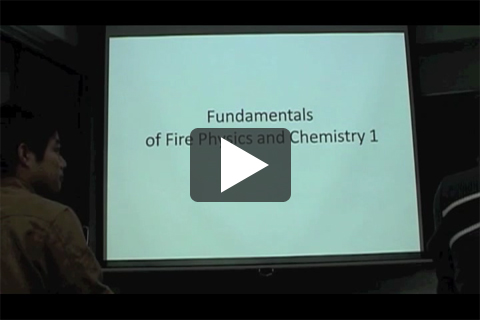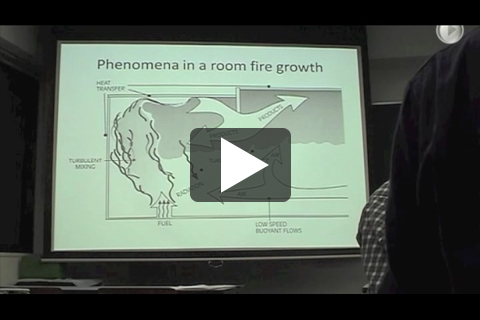Class
Course objectives
Learn basic knowledge in fire chemistry and physics useful for all practioners in fire, e.g. firefighter, building construction designer, building material manufacture and protection equipment manufacture. Formulas are presented only when it is needed to understand the quantitative aspect of fire.
Learn the English language specific to fire science and become able to communicate with foreign counterparts in a business community.
Fundamentals of Fire Physics and Chemistry I <Lesson 1>
Introduction
- What is fire?
Fire and Combustion
Chemical Reactions - Role of visualization and scale models in fire research
- Scientific units and symbols
What is fire?
- Fire and combustion: a chemical reaction involving fuel and an oxidizer—oxygen (O2) in the air
- Fire is combustion not intended to be controlled
- Fire is a chemical reaction that produces light and energy sufficient to damage the skin
- Rusting of iron, or combustion in an engine, is fire?
Fundamentals of Fire Physics and Chemistry I <Lesson 2>
Combustion in Natural Fires
Topics to learn
- Diffusion flames (Candle flames and turbulent flames)
- Smoldering
- Spontaneous combustion
- Pre-mixed flames
True or false?
- Autoignition requires a pilot flame.
- An oxyacetylene torch is a diffusion flame.
- A burning pool of gasoline is a diffusion flame.
- Charring is not likely during smoldering.
- Plastics cannot smolder.
- Smoldering can occur in concealed spaces.
- A flame must be 3 m high to be turbulent.
 Japanese
Japanese


